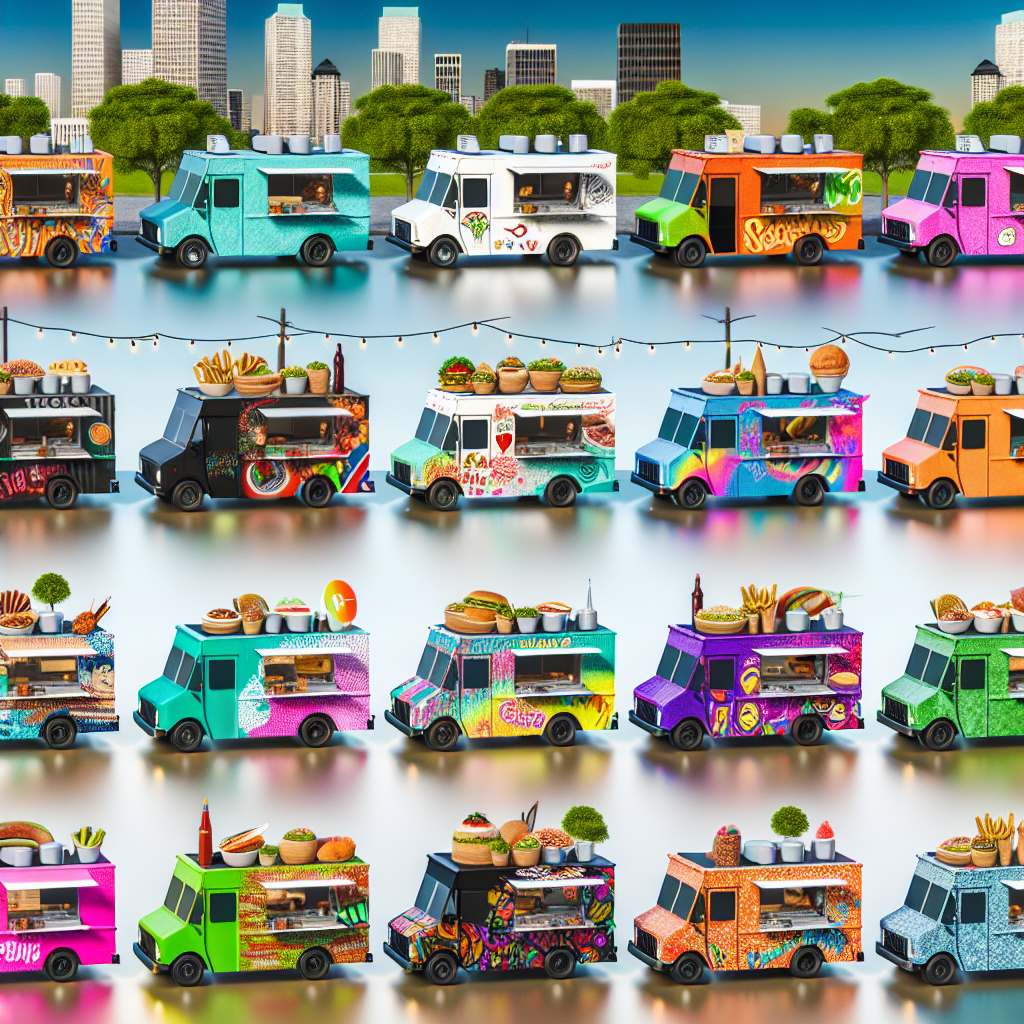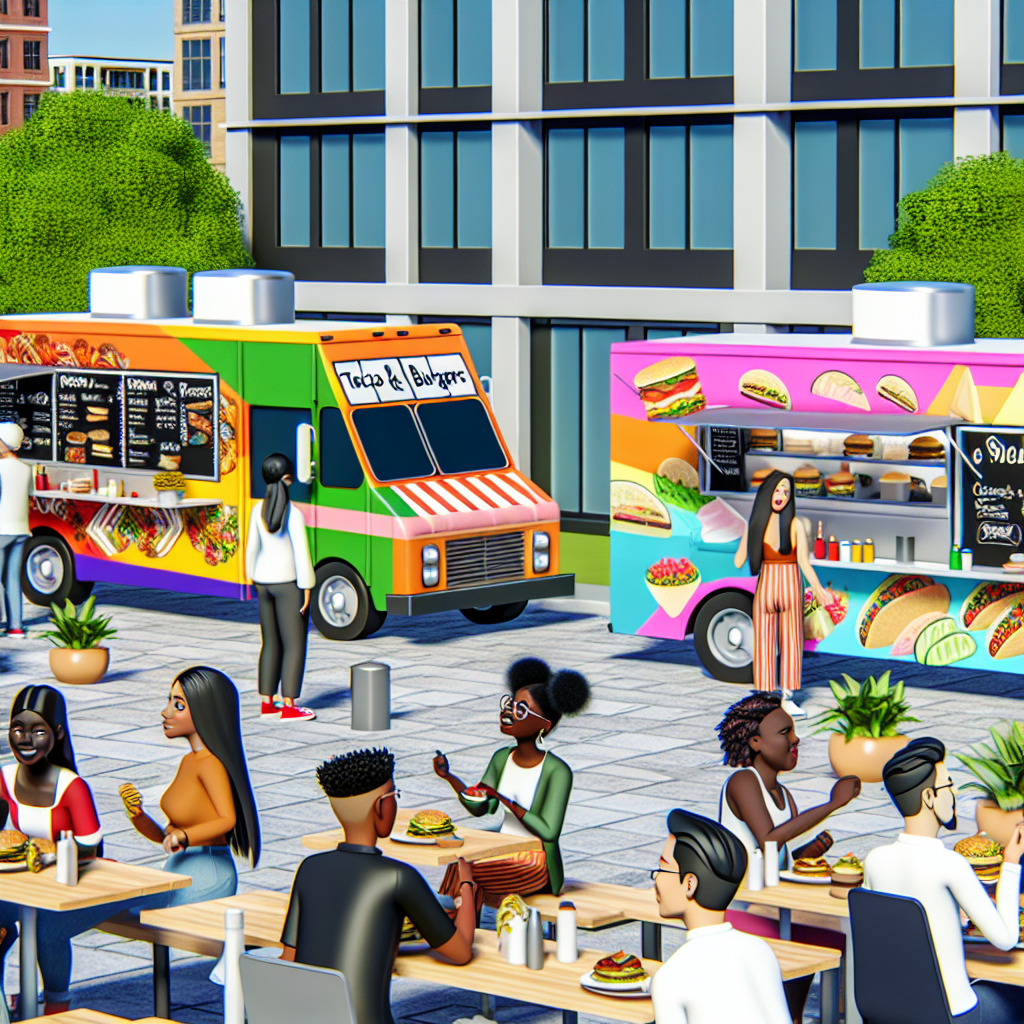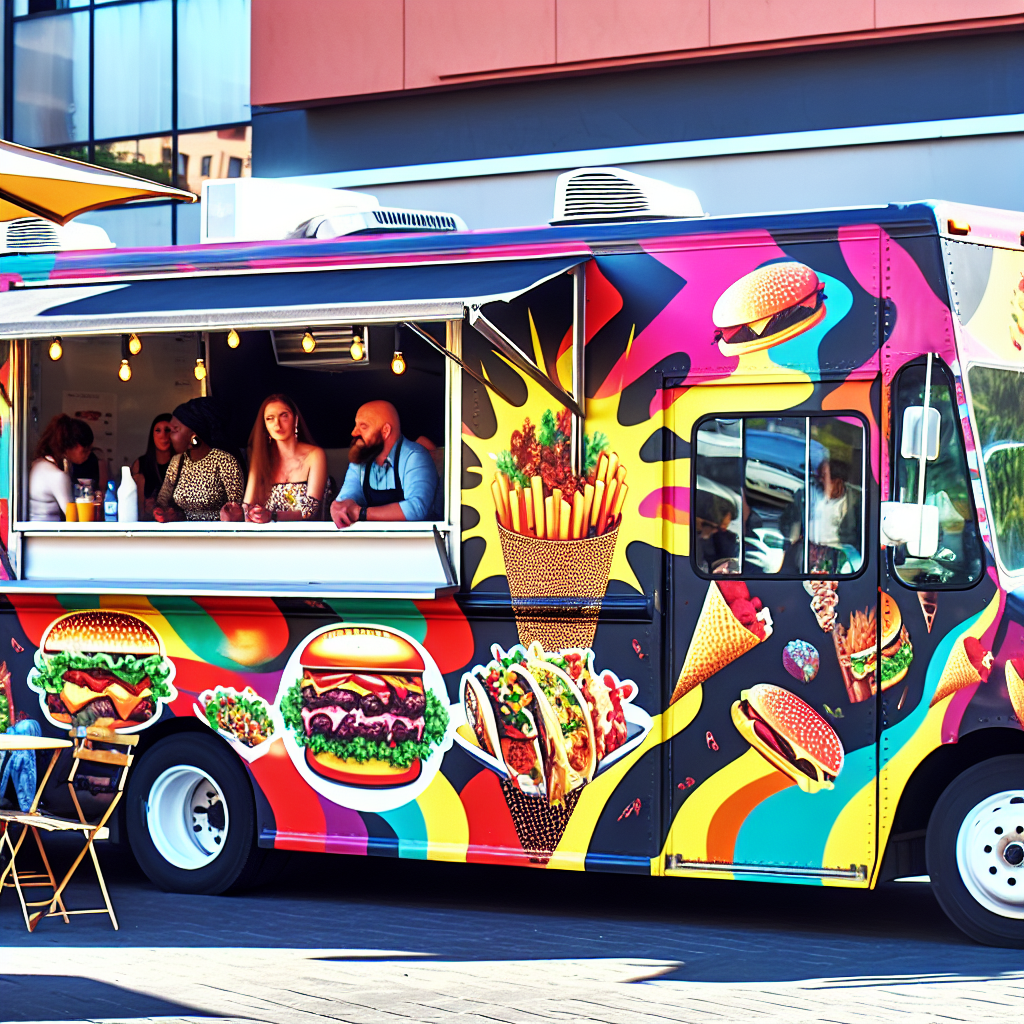The aroma of sizzling street food, vibrant colors of food trucks, and the thrill of culinary creativity come together in the bustling food truck industry. As more entrepreneurs jump into this exciting venture, the first and perhaps most crucial decision they face is selecting the right food truck model. With various options available, such as versatile step vans, practical cargo vans, and adaptable trailers, the choice can be overwhelming.
Each model has its unique set of features that can significantly influence efficiency, mobility, and ultimately, success in the competitive food truck market. Choosing the right vehicle is not just about aesthetics or budget; it lays the foundation for your entire business strategy. In an era where every detail counts, making an informed decision could mean the difference between a thriving food truck and one that just barely makes it through the day.
Let’s explore the key considerations and diverse models that can propel your food truck business to new heights.
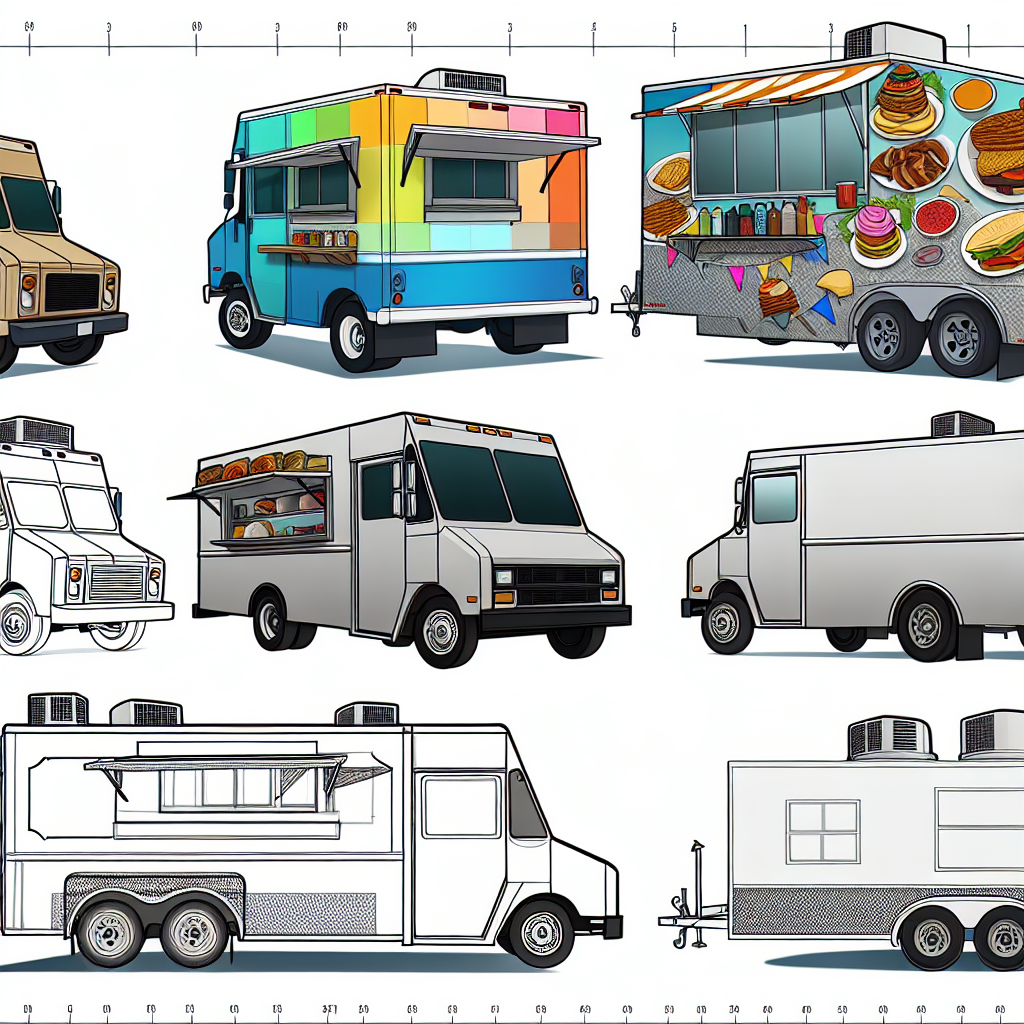
Step Vans: A Preferred Choice in the Food Truck Industry
Step vans have become a cornerstone in the food truck industry due to their versatility, spacious interiors, and adaptability. Here’s an overview of their features, advantages, use cases, popularity, and performance:
Features and Advantages of Step Vans in the Food Truck Industry:
-
Proven Performance Record:
Since the 1930s, step vans have been utilized for food delivery, initially transporting dairy products and baked goods. Their longstanding reliability makes them a trusted choice for modern food truck operations. [source] -
Ample Space for Operations:
The design of step vans offers generous interior space, facilitating efficient food preparation and service. This spaciousness allows for the installation of advanced kitchen equipment, enhancing menu offerings and operational efficiency. [source] -
Customization Potential:
Operators can tailor step vans to their specific needs, incorporating features like retractable awnings, service windows, and specialized kitchen appliances. This adaptability enables the creation of a unique brand identity and optimized workflow. [source] -
Mobility and Flexibility:
The inherent mobility of step vans allows food truck businesses to reach diverse customer bases by attending events, festivals, and high-traffic areas, thereby maximizing exposure and revenue opportunities. [source]
Use Cases and Popularity:
-
Diverse Culinary Offerings:
Step vans are employed across a wide range of cuisines, from traditional fast food to gourmet and fusion dishes, catering to varied consumer preferences. -
Event Participation:
Their mobility makes step vans ideal for serving at events, festivals, and private functions, providing unique dining experiences in various settings. -
Urban and Suburban Markets:
Step vans effectively serve both urban centers and suburban areas, adapting to different market demands and customer demographics.
Performance and Industry Statistics:
-
Market Growth:
The food truck industry has experienced significant growth, with revenue reaching an estimated $2.4 billion in 2024, reflecting a compound annual growth rate (CAGR) of 10.9% over the past five years. [source] -
Operator Demographics:
Approximately 50% of food truck owners are under the age of 50, indicating a trend of younger entrepreneurs entering the industry. [source] -
Customer Engagement:
Social media plays a pivotal role in marketing, with 68% of food truck owners regularly utilizing platforms to promote their business. Notably, 52% report a 20% increase in sales attributed to social media marketing campaigns. [source] -
Technological Integration:
The adoption of digital tools is widespread, with nearly 90% of food truck owners relying on technologies such as mobile point-of-sale systems and social media schedulers to enhance operations. [source]
In summary, step vans offer a combination of reliability, spaciousness, and adaptability, making them a preferred choice in the food truck industry. Their features support diverse culinary ventures, and their performance is underscored by the industry’s robust growth and the strategic use of technology and marketing by operators.
User Adoption Data for Food Truck Models
As of 2023, the United States has around 36,000 food trucks. This figure represents significant growth in the mobile food industry. It underscores the need for vendors to choose the right vehicle model that meets their operational needs and appeals to consumers.
Preferred Food Truck Models:
- Step Vans: Vendors favor step vans for their roomy interiors and ability to support complex menus. Notable models include:
- Chevy P30: Still popular despite production halting in 1999. Its durability and large space make it a reliable choice.
- Freightliner MT45: This model is known for its reliability and spaciousness, suitable for extensive kitchen setups.
- Ford P700: Praised for its size and maneuverability, it supports a variety of culinary operations.
- Cargo Vans: Ideal for vendors with simplified menus or those seeking more budget-friendly options. Leading models are:
- RAM ProMaster: Valued for versatility and customization.
- Ford Transit: Highly adaptable, commonly used across different applications, including food trucks.
- Trailers: These provide an alternative for vendors who prefer something that can easily be detached, enabling versatile operations.
Vendor Experiences and Adoption Rates:
- Operational Costs:
- The average price for a new food truck ranges from $30,000 to over $100,000 based on the model and features.
- Used models average around $46,800.
- Revenue Potential:
- Successful food trucks typically generate annual revenues between $250,000 and $500,000.
- Customer Demographics:
- The primary customer demographic is individuals aged 25 to 44.
- Growth Trends:
- The food truck industry has seen an annual growth rate of about 12% since 2016, showing a growing presence in food service.
In conclusion, selecting the right food truck model, whether it is a step van, cargo van, or trailer, should consider factors like the complexity of the menu, budget limitations, and operational requirements. Understanding these elements in connection with current industry trends and customer demographics is crucial for achieving success in this competitive market.
Cargo Vans: A Cost-Effective Alternative for Food Truck Operators
Cargo vans have emerged as a favored choice for food truck owners seeking budget-friendly solutions that do not compromise on mobility and functionality. Notable models like the Ford Transit, Mercedes-Benz Sprinter, and Nissan NV Cargo cater to a variety of culinary needs while providing advantages for operators on the go.
Cost Considerations
- Vehicle Acquisition: New cargo vans typically range from $25,000 to $50,000, while used models can be found for $10,000 to $25,000, depending on their condition. Source
- Conversion Expenses: Transforming a cargo van into a food truck generally incurs the following costs:
- Basic modifications can range from $10,000 to $40,000.
- Full custom build-outs could push costs anywhere from $80,000 to $200,000 based on chosen features and equipment. Source
Space and Layout
- Interior Dimensions: Cargo vans offer varying spaces; for example, the Mercedes-Benz Sprinter features up to 487.3 cubic feet of cargo capacity. This capacity allows for sufficient kitchen equipment while maintaining a compact footprint. Source
- Layout Planning: Given their compact nature, cargo vans demand efficient layout design to optimize space, making them particularly suitable for menus that require minimal equipment and preparation areas.
Suitability for Different Types of Food Service
- Simple Menus: Cargo vans excel in serving food concepts centered around beverages, sandwiches, or pre-prepared items. They are best for operators who do not need extensive cooking equipment.
- Complex Menus: For businesses that rely on extensive cooking or intricate preparations, cargo vans may present limitations. In such cases, larger vehicles like step vans offer the necessary space without the higher cost associated with them. Source
Vendor Insights
- Maneuverability: Food truck operators frequently highlight the ease of navigating cargo vans through city streets and tight parking situations as a significant advantage of these vehicles.
- Fuel Efficiency: Cargo vans with diesel engines, such as the Sprinter, can achieve 20 to 25 miles per gallon, permitting cost savings on fuel over time. Source
- Branding Opportunities: The sleek design of cargo vans also serves as an attractive canvas for branding and wraps, helping vendors attract customers and boost visibility.
Conclusion
Cargo vans represent a practical and economical choice for food truck entrepreneurs, ideal for businesses that focus on simpler menus and mobility. Assessing your specific food service objectives, operational needs, and equipment requirements is vital when determining if a cargo van aligns with your culinary ambitions.
| Model Type | Cost Range | Size (Length x Width) | Performance (HP) | Typical Use Case |
|---|---|---|---|---|
| Step Vans | $30,000 – $100,000 | 18 – 26 feet | 100 – 350 HP | Extensive menus, food festivals |
| Cargo Vans | $25,000 – $50,000 | 10 – 14 feet | 150 – 250 HP | Simple menus, urban catering |
| Trailers | $5,000 – $40,000 | 10 – 34 feet | N/A | Flexible setups, events |
Food Trailers: An Alternative to Food Trucks
Food trailers have emerged as a compelling option for aspiring food entrepreneurs seeking an alternative to traditional food trucks. They offer their own unique advantages and challenges, making them worth considering.
Benefits of Food Trailers:
- Lower Initial Investment: Food trailers typically cost between $20,000 and $70,000, considerably less than fully equipped food trucks, which can range from $50,000 to $200,000. This lower price point can make it easier for new vendors to enter the market. (blog.slantco.com)
- Flexibility in Size and Design: Trailers come in various sizes, allowing for better customization according to menu complexity and operational needs. This adaptability permits operators to scale their business effectively as demand grows, without the higher costs associated with upgrading a food truck.
- Easier Maintenance: Because trailers do not have engines, maintenance tends to be simpler and less expensive compared to food trucks. In the event of a vehicle breakdown, the trailer can be hitched to a different vehicle, minimizing downtime. (gastronova.eu)
Downsides of Food Trailers:
- Mobility Limitations: Although trailers can be towed, they are less maneuverable than food trucks. Finding suitable parking can be a challenge, especially in crowded urban areas.
- Operational Setup: Each time a trailer is relocated, operators must set up and tear down their setup, which can be time-consuming, especially at events or festivals.
Common Models and Considerations: Popular models include the Diamond Cargo and the Freedom Trailers. Entrepreneurs should consider towing vehicle requirements, regulatory approval processes, and their own operational strategies when choosing a trailer versus a truck.
Conclusion: Food trailers present a viable option for entrepreneurs seeking to establish a food business with a lower entry cost. Careful consideration of mobility, setup times, and expansion potential is essential for ensuring long-term success in a competitive marketplace.

Conclusion
In the vibrant world of food trucks, choosing the right vehicle is essential for business success. Throughout this article, we explored three prominent food truck models: step vans, cargo vans, and food trailers. Each model brings unique advantages tailored to different operational needs and culinary styles.
Step vans stand out for their spacious interiors and extensive customization options, making them ideal for complex menus and busy operations. Cargo vans, on the other hand, provide a cost-effective solution for vendors focusing on simpler menus, offering excellent fuel efficiency and maneuverability. Finally, food trailers present a flexible alternative, allowing entrepreneurs to enter the market with lower initial costs, although they require careful consideration regarding mobility and setup time.
Additionally, aspiring food truck owners must navigate various regulations, such as health, safety, and zoning laws, which can influence their choice of vehicle and operational strategy. Understanding these food truck regulations can ensure compliance and contribute to the long-term success of a food truck business.
Selecting the appropriate food truck model involves a thorough evaluation of factors such as budget, menu complexity, and targeted consumer demographics. Aspiring food truck owners are encouraged to examine their specific operational requirements and market conditions to make an informed choice that paves the way for their success in this dynamic industry.
So, whether you lean towards a spacious step van, a versatile cargo van, or an adaptable trailer, make sure to conduct diligent research and choose a model that aligns with your culinary vision and business goals. Your food truck dream begins with the right foundation!
Key Statistics and Insights in the Food Truck Industry
As of 2023, the United States has approximately 36,324 food trucks in operation, showcasing a 9.9% increase from the previous year. The food truck industry has seen an average annual growth rate of 10.9% from 2018 to 2023. In terms of market valuation, the U.S. food truck market was projected to be valued at around $4.52 billion in 2024, with expectations to grow to $7.89 billion by 2033 at a CAGR of 6.38%. Notably, successful food trucks can earn between $250,000 to $500,000 annually, while the average revenue for food trucks in 2025 is reported to be $346,000 (FoodTruckProfit, TheSmallBusinessBlog, IBISWorld).
Popular Food Truck Models and Costs
- New food trucks can range from $125,000 to $200,000 including kitchen essentials.
- Food trucks generally vary in length from 16 to 25 feet, with this size segment capturing 50.95% of the market share in 2024.
- Operational costs are projected to rise by 7.9% from 2020 to 2025 due to inflation and increasing ingredient prices.
Vendor Preferences and Customer Demographics
- Popular cuisines among food trucks include Mexican and Italian foods.
- The target customer demographic mainly consists of individuals aged 25 to 44, accounting for 43.4% of customers.
- Successful food trucks can generate annual revenues ranging from $250,000 to $500,000, with exceptional trucks achieving over $1.5 million.
Quotes from Industry Experts
- Invest in Quality Builds: “It’s crucial to purchase from reputable builders to ensure compliance with codes and regulations; this can save time and hassle” (OverhillConcessions).
- Keep Menus Simple: Maintain a limited menu to avoid confusion and waste, creating more efficient operations.
- Adaptive Location Strategy: Moving frequently allows exploring diverse customer bases and minimizes the reliance on repeat customers.
- Proactive Marketing: Traveling to various locations increases visibility and can secure future bookings, essential for long-term success.
- Dynamic Staffing: Having flexibility with staffing can enhance operational efficiency during peak seasons.
These statistics and insights provide a robust framework for understanding the trends and considerations that aspiring food truck operators should take into account when choosing their models and approaching their business strategies. Incorporating these insights can help pave the way for effective operations and market engagement in a competitive landscape.
Cost Comparison Graph
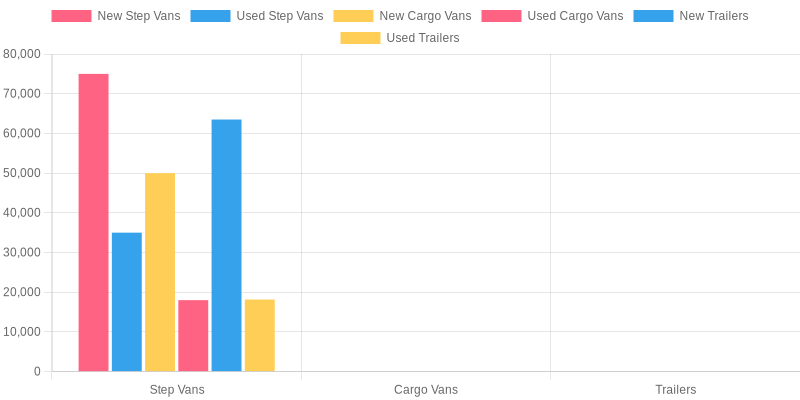
Bar graph showing cost ranges for different food truck models including step vans, cargo vans, and trailers.
Key Statistics and Insights in the Food Truck Industry

Image depicting key statistics and insights about the food truck industry, including market growth and revenue potential.
Case Studies of Successful Food Trucks
-
Kogi BBQ (Los Angeles, CA)
- Model and Strategy: Founded in 2008 by Chef Roy Choi, Kogi BBQ pioneered the fusion of Korean and Mexican cuisines, offering innovative dishes like Korean BBQ tacos and kimchi quesadillas.
- Unique Features: Kogi BBQ effectively utilized social media platforms, particularly Twitter, to announce their locations and specials, creating a sense of urgency and excitement that garnered a loyal following.
-
The Halal Guys (New York, NY)
- Model and Strategy: Starting as a hot dog cart in 1990, The Halal Guys transitioned to serving halal street food, focusing on simple yet flavorful dishes at affordable prices.
- Unique Features: Their commitment to quality and consistency helped them build a strong brand identity, leading to a global franchise with locations in cities like Los Angeles and international markets like Dubai.
-
Coolhaus (Los Angeles, CA)
- Model and Strategy: Founded by Natasha Case and Freya Estreller, Coolhaus began as a food truck offering gourmet ice cream sandwiches with unique flavors and architectural-inspired names.
- Unique Features: Their creative branding and innovative menu attracted a diverse customer base, leading to partnerships with retailers like Target and Whole Foods, expanding their brand nationally.
-
GrillGo (Dallas, TX)
- Model and Strategy: GrillGo, known for its American BBQ offerings, faced inconsistent weekday sales. They developed a corporate catering arm targeting local businesses for weekday events.
- Unique Features: Establishing a digital booking portal for corporate events secured recurring clients, resulting in a 74% increase in average monthly revenue.
-
The Green Truck (Los Angeles, CA)
- Model and Strategy: The Green Truck focused on serving organic and locally sourced meals, offering healthier versions of classic dishes like grass-fed burgers and quinoa salads.
- Unique Features: Their emphasis on sustainability and health-conscious options resonated with consumers, allowing them to carve out a unique niche in the competitive market.
These examples demonstrate that success in the food truck industry often stems from innovative menus, effective social media strategies, strong branding, adaptability, and a deep understanding of target markets.
Profiles of Well-Known Food Trucks
-
Kogi BBQ (Los Angeles, CA)
- Food Truck Model: Kogi BBQ operates multiple trucks serving a fusion of Korean and Mexican cuisine.
- Menu: Signature items include short rib tacos and kimchi quesadillas.
- Engagement Strategies: Pioneered the use of social media to announce locations, creating excitement among followers.
- Awards: Featured in major media outlets and recognized for innovative street food offering.
-
The Grilled Cheese Truck (Los Angeles, CA)
- Food Truck Model: Specializes in gourmet grilled cheese sandwiches.
- Menu: Popular items include the Cheesy Mac & Brisket and The Brie Melt.
- Engagement: Active online presence to connect with customers.
- Awards: Recognized as the #1 Food Truck in LA by the Los Angeles Hot List in 2011.
-
Pincho Man (Miami, FL)
- Food Truck Model: Specializes in Pinchitos (skewered meats).
- Menu: Signature dishes include the Pincho Deluxe and Off da Chain Burger.
- Engagement: Built a loyal following through consistent quality and service.
- Awards: Named one of Miami’s top food trucks by Travel + Leisure.
-
The Halal Guys (New York, NY)
- Food Truck Model: Originally a food cart, now a well-known food truck brand.
- Menu: Famous for their chicken and gyro platter with flavorful sauces.
- Engagement: Expanded into a global franchise with multiple locations.
- Awards: Featured in several media outlets, reflecting their acclaim.
-
Curry Up Now (San Francisco, CA)
- Food Truck Model: Showcases Indian cuisine with a modern twist.
- Menu: Known for Tikka Tacos and Burritos.
- Engagement: Major accolades for innovation and expansion into physical locations.
